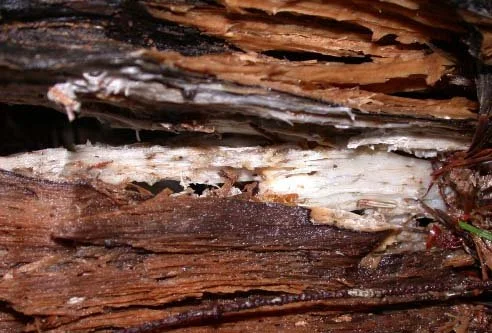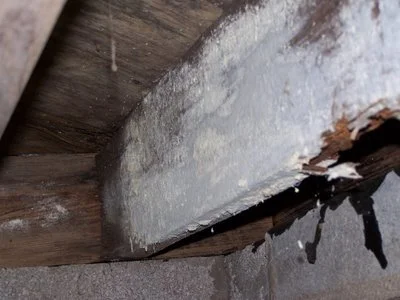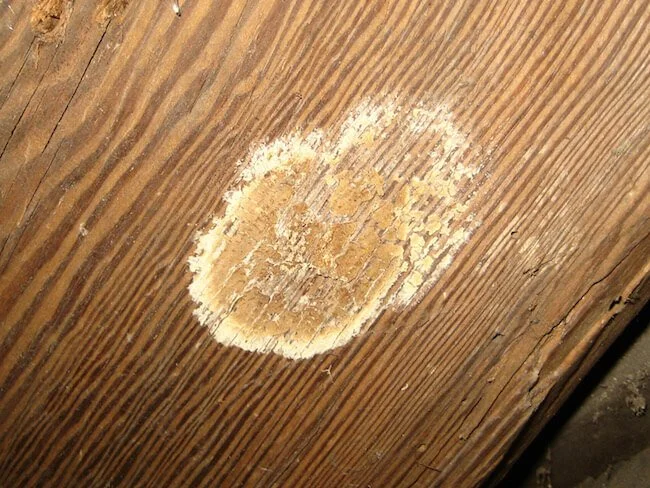What to look for: Fungus (White Rot)
As a homeowner, it's crucial to grasp the fundamentals of white rot fungus for effective treatment and prevention strategies.White rot fungus appears as a fluffy, white growth on wood surfaces, often accompanied by a musty odor. It can vary in appearance, sometimes resembling cottony patches or powdery layers, depending on environmental conditions and the specific type of fungus involved.
White rot fungi typically enter homes through wood that is already infected or through spores carried by air currents and moisture. They thrive in damp environments with poor ventilation, such as basements, crawl spaces, and areas affected by water leaks. Once inside, they can spread rapidly if favorable conditions persist, colonizing and decaying wood structures.
The destructive capability of white rot fungi lies in their ability to break down both cellulose and lignin, the primary components of wood. Unlike brown rot fungi that primarily degrade cellulose, white rot fungi can decompose lignin as well, causing more extensive damage. This decomposition weakens wood fibers, leading to structural instability, sagging floors, and in severe cases, compromising the integrity of the building.
Effective treatment of white rot fungus involves several steps. First, identifying and eliminating the source of moisture that promotes fungal growth is crucial. This may involve repairing leaks, improving ventilation, and reducing humidity levels in affected areas. Removal of infected wood and materials is essential to prevent further spread. Professional fungal treatments, such as fungicidal sprays or fumigation, may be necessary to eradicate remaining spores and prevent recurrence.
White rot fungus poses a significant threat to the structural integrity of homes and buildings. By recognizing its appearance, understanding how it enters and spreads within homes, and employing effective eradication methods, pest control companies can help homeowners mitigate the damage caused by this destructive fungal species. Educating clients on preventive measures, such as regular inspections and moisture control, is also critical in maintaining a healthy and safe living environment free from white rot fungus infestations.




